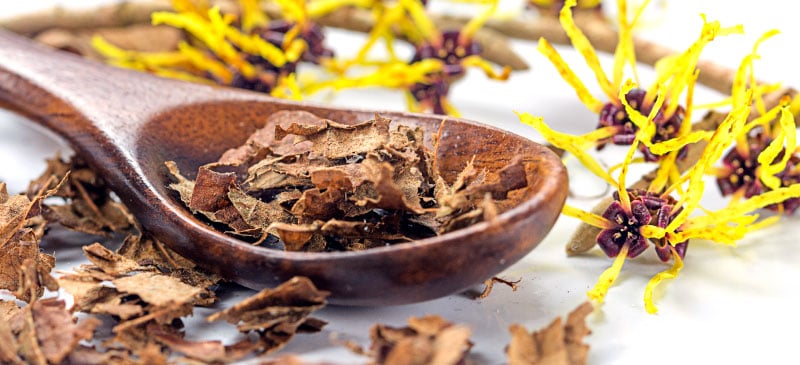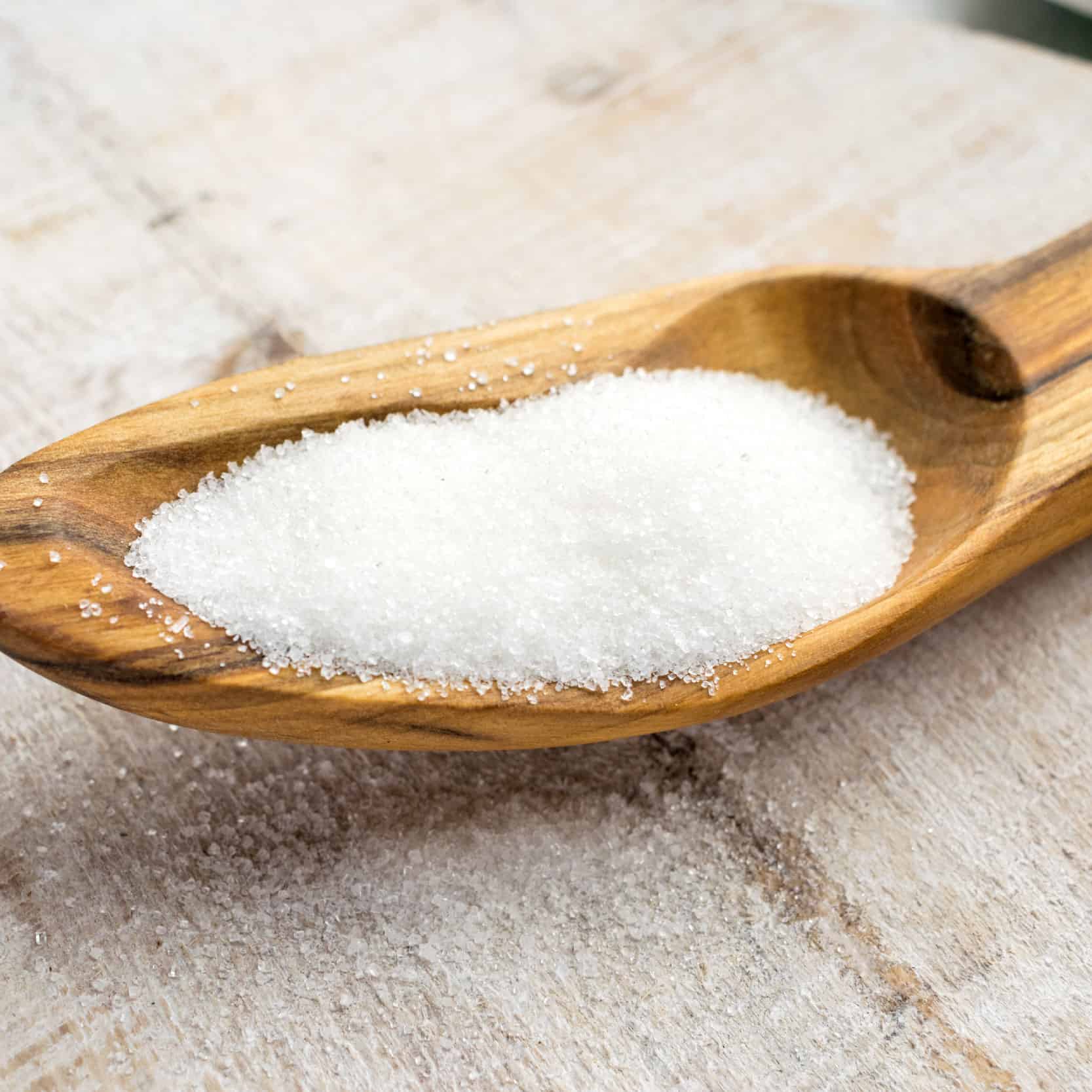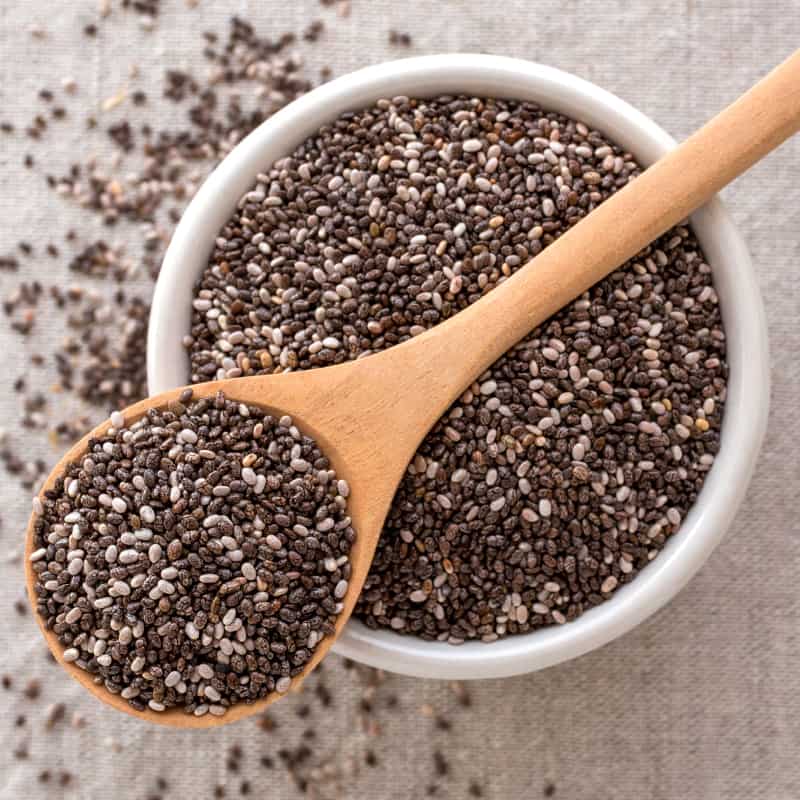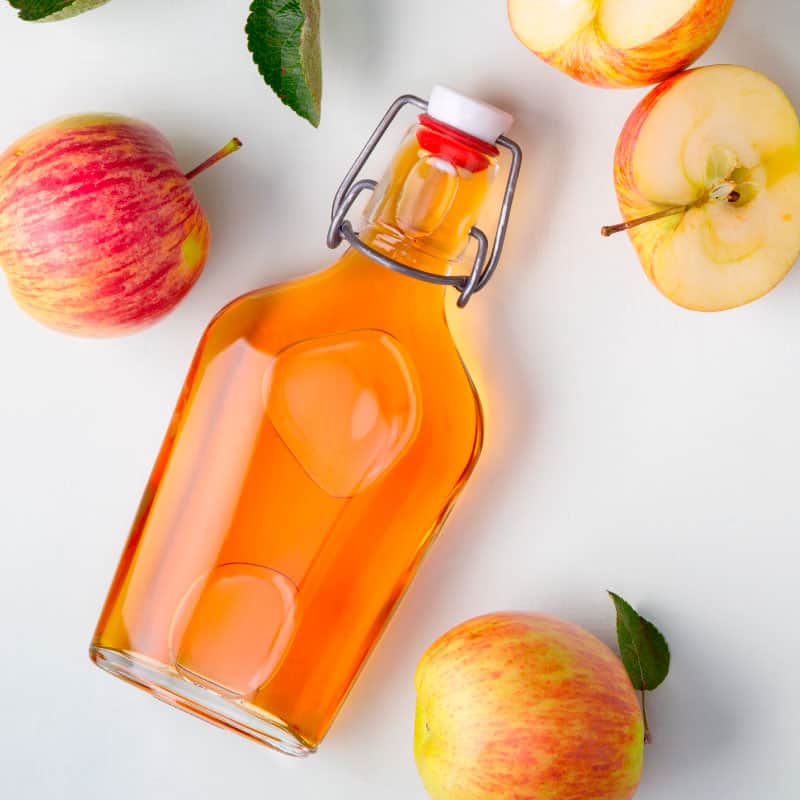This Dr. Axe content is medically reviewed or fact checked to ensure factually accurate information.
With strict editorial sourcing guidelines, we only link to academic research institutions, reputable media sites and, when research is available, medically peer-reviewed studies. Note that the numbers in parentheses (1, 2, etc.) are clickable links to these studies.
The information in our articles is NOT intended to replace a one-on-one relationship with a qualified health care professional and is not intended as medical advice.
This article is based on scientific evidence, written by experts and fact checked by our trained editorial staff. Note that the numbers in parentheses (1, 2, etc.) are clickable links to medically peer-reviewed studies.
Our team includes licensed nutritionists and dietitians, certified health education specialists, as well as certified strength and conditioning specialists, personal trainers and corrective exercise specialists. Our team aims to be not only thorough with its research, but also objective and unbiased.
The information in our articles is NOT intended to replace a one-on-one relationship with a qualified health care professional and is not intended as medical advice.
Witch Hazel Uses for Skin, Hair & More
June 8, 2023

Today, we have hundreds of different beauty products available to us — acne washes, toners, scrubs, etc. — but what did people use thousands of years ago before commercial chemicals existed to help heal their skin? When it comes to natural skin care, one time-honored medicinal plant is witch hazel, which Native Americans relied on for fighting swelling, sores and infections.
There may be no plant more beneficial to your skin, as research showcases the many advantages witch hazel provides.
What is witch hazel good for? Thanks to its astringent properties, it’s one of the most effective natural acne treatments known to man — and it’s even been shown to help protect against skin cancer. Other benefits include naturally reducing blisters, insect bites, poison ivy, inflammation, hemorrhoids, toothaches and much more.
So if you’re looking for cleaner, healthier skin with the help from a natural product, look no further than witch hazel.
What Is Witch Hazel?
The witch hazel plant (which has the species name Hamamelis virginiana) is a type of plant native to North America and a member of the Hamamelidaceae plant family. Sometimes also called winterbloom, the bark and leaves of the witch hazel plant are used to make a skin-healing astringent.
Does witch hazel kill germs? Yes, this multi-purpose product has many uses, including killing bacteria that can live within skin’s pores. The most popular use is for skin care, since its strong antioxidant and astringent properties can keep acne, wrinkles and more at bay. It can also help stop cellular damage that can lead to skin cancer, while preventing signs of aging and speeding up healing.
When it comes to the products that you apply directly to your skin, you always want to treat the surface of your body how you would the inside: Avoid as many chemicals and toxins as possible. Witch hazel offers benefits over other beauty products because it’s completely natural and free of environmental pollutants, irritating ingredients, fake fragrances and other contaminants.
How Witch Hazel Works
How can witch hazel do so much? High levels of healing active ingredients reduce inflammation, cellular damage and swelling, while also soothing wounds.
- The bark, twigs and leaves of the plant are used to extract active constituents called polyphenols and tannins. They’re then added to either alcohol or water to make a concentrated product called witch hazel water, Hamamelis water or distilled witch hazel extract.
- Tannins are responsible for making witch hazel extract a natural astringent, since they remove excess oil from skin. This is the reason why witch hazel is one of the most popular natural acne treatments worldwide and is used in dozens of over-the-counter treatment gels, washes and lotions. Studies also show that tannins from witch hazel can be used to make plant-based antivirals, such as to fight the flu and other illnesses.
- In addition to tannins, witch hazel is high in compounds called “gallate esters,” which include proanthocyanidins that have antiviral effects, hydrolyzable tannins (galloylated sugars) and methyl gallate.
- Witch hazel extract is considered to be polyphenolic and has been shown to help inhibit cell proliferation in cancerous human cells. Studies show that it is capable of stopping mutated cell cycles and inducing apoptosis (death of dangerous cells).
Because witch hazel is a natural antioxidant and anti-inflammatory, it’s effective as a “free radical scavenger.” This means it helps protect against DNA damage and tumor growth.
Oxidative stress and free radical damage build up over time from exposure to things like UV light, pollution, a poor diet, stress and so on. Plants like witch hazel that are high in polyphenols are the same kind used to create anti-aging nutritional supplements that slow down disease development by protecting cells.
Uses
Witch hazel has been used for centuries to naturally help treat and prevent:
- acne
- skin sores
- bruises
- redness and swelling
- ingrown hairs
- psoriasis or eczema
- oily skin
- excess sweating
- varicose veins
- cracked or blistered skin
- insect bites
- poison ivy
- irritated scalp
- sunburn and melanoma
- razor burn (such as in a DIY aftershave)
- mucous membrane inflammation
- hemorrhoids
- allergic reactions
Recent studies even show that the tannins found in witch hazel may exert a protective action against colon cancer cells.
The skin is our largest and most vulnerable organ, so it could use all the support it can get. Skin is our natural barrier to the outside world and provides us with protection against UV radiation, chemicals in our food supply, bacteria and other germs, and environmental pollutants.
All of the “stress” that our bodies deal with every day, both internally and externally, show up on our skin in the form of aging, puffiness, infections, inflammation and sensitivities. That’s why we rely on eating and using natural antioxidants and anti-inflammatories to help curb inflamed and diseased cells.
Herbal plant therapies for skin disorders have been used for thousands of years, and today many traditional herbs are being reintroduced, studied extensively and experiencing a resurgence in popularity since many chemical treatments don’t always work or have harsh side effects.
Benefits
1. Reduces Acne
What does witch hazel do for acne? As a natural home remedy for acne, applying witch hazel to acne-prone skin can help slow down bacteria growth and decrease inflammation, redness, oiliness and bleeding.
Can you clean your face with witch hazel? Yes, since it’s a natural cleanser, it’s capable of reducing bacteria growth on the skin and speeds up the time needed to heal infections or scabs.
Another benefit for sensitive skin is that it reduces the look of pores (although no product can actually shrink pores) and helps stop excess oil production, sweating, and development of blackheads or whiteheads, which can contribute to breakouts and tempt you to pick at your skin. You can skip irritating acne products and turn to witch hazel to lower the severity of blemishes forming under the skin and prevent blackheads caused by dried sebum buildup in pores.
How long does witch hazel take to clear acne? It depends on how severe someone’s acne is. It may take effect in just several days or take several weeks.
Does witch hazel get rid of acne scars? It can help, due to its anti inflammatory and antioxidant properties. Applying some can help stop swelling and redness if you already picked at your acne. It can also curb signs of past irritations and deal with skin infections that may result from picking.
2. Fights Signs of Aging and Damage from Sun Exposure
What does witch hazel do to your face? Does witch hazel fade dark spots? Can it tighten skin?
If you’re looking for a natural way to firm up your skin and slow down signs of aging like scars, redness, discoloration, dryness and puffiness around the eyes, then look no further than witch hazel. It tightens skin and is protective against skin cancer, melanoma and other damage caused by UV light because of its protective polyphenols and tannin antioxidants. These inhibit the proliferation of melanoma cells and help protect healthy skin cells into older age.
Use it to keep your skin free from irritating chemical products that can alter oil production and increase dryness. Witch hazel has been shown to help protect collagen and skin elasticity just as well as many commercial beauty products.
Its anti-inflammatory and antioxidant properties make it a great way to preserve skin’s elasticity, saving your complexion and helping you deal with the effects of environmental stress on your skin. And because using witch hazel for your pores helps them look smaller, this can make your skin appear more even.
3. Treats Insect Bites
Many bug repellents, DIY bug sprays and commercial products used for treating insect bites contain witch hazel. Wondering how to get rid of mosquito bites? People turn to witch hazel to reduce the effects of bug bites, such as pain and swelling from stings, allergies and irritations.
Certain studies have found that applying witch hazel cream to skin irritations can curb symptoms just as well as synthetic chemical creams, including dexpanthenol, which is often used to fight skin irritations in children. It can also be used to help speed up healing scabs or minor cuts because witch hazel extract contains isopropyl alcohol, which is another natural disinfecting ingredient that kills bacteria and helps prevent infections.
4. Cleanses Hair and Protect the Scalp
To get rid of greasy hair, use witch hazel on your hair to help reduce oil buildup. This leaves your hair shinier, healthier and more volumized. It’s also great for removing hair odors, helping with an irritated scalp, or speeding up healing from any bites or acne at the base of the neck when you’re prone to sweating.
One study conducted by the Center for Dermatology and Disease in Zurich, Switzerland, found that shampoo containing witch hazel extract helped soothe patients’ irritated scalps, redness, itching and inflammation. After testing the effects of witch hazel on 1,373 patients, a percentage of patients reported improvement in symptoms and better tolerance of other hair products.
5. Prevents Ingrown Hairs and Rashes
After shaving, you can apply witch hazel to any part of the body to slow bleeding from nicks or cuts, prevent bacteria growth and infections within hair follicles, soothe razor burn, and prevent ingrown hairs from forming. Some people also like to use the toner along with other healing essential oils on skin after waxing to reduce pain, swelling and bleeding.
6. Stops Ear Infections from Developing
Since witch hazel is an effective antibacterial, and “swimmer’s ear” or other ear infections are usually caused by bacterial infections, it’s a natural way to treat irritations within the ear canal.
Witch hazel helps clear up bacteria overgrowth and infections within the ear; dry up oil, pus and excess sweat; break up wax; and even remove odor. To clean the outside of the ears, apply several drops to a swab and rub around the inside of the ears.
7. Soothes a Sore Throat
Some people like sipping on witch hazel tea (not witch hazel water or a drink made with extract, which contains isopropyl alcohol) to soothe an irritated, infected or sore throat. The natural astringent properties make it beneficial for fighting illnesses that affect the throat, while its soothing properties lower pain and discomfort caused by coughs, strep throat, sore throat, sinus infections, tonsillitis or other throat problems.
8. Stops Pet Odor and Bug Bites
Witch hazel can stop excess bacteria from forming on the surface of your pet’s skin, including in wounds or bites, which can lead to odor. It is non-irritating to pets, helps prevent them from getting bug bites by repelling mosquitoes and other insects, can slow down itching or bleeding, and helps cleanse their skin.
9. Treats Hemorrhoids
Witch hazel also performs as a hemorrhoids home remedy. You can apply witch hazel water to the skin to help lower pain and inflammation caused by uncomfortable hemorrhoids. It’s useful for relieving itching, irritation, bleeding and burning from hemorrhoids as well.
10. Protects Your Mouth, Lips and Gums
If you have blisters on your lips, inner cheeks or gums, turn to witch hazel to speed healing and get rid of pain and swelling. It’s safe to apply the extract to the inside of your mouth to slow down bleeding, blisters, sores, bad breath odors and infections of the gums, especially when combined with other healing oils like coconut oil or peppermint oil.
Witch hazel also helps relieve pain from toothaches or teething in infants, prevent infection after oral surgery, and fight bleeding and inflammation from mouth sores.

How to Use
Look for witch hazel in pharmacies, health food stores, stores that sell beauty products or online. Extract derived from the witch hazel plant can be used topically (on the surface of the skin) or taken internally just like medicine. Depending on how you use witch hazel, it can help stop manage skin conditions like acne and skin redness or other types of issues like diarrhea, colds, mucus colitis, vomiting, coughing, the flu and more.
The most popular way to use witch hazel extract is to dilute it with a carrier oil (like coconut or jojoba oil) and then apply it directly to the skin, either as a serum, lotion, toner or homemade face wash. Doctors and holistic healers recommend it for itching, pain, redness, swelling (inflammation) and other wounds, even for people with sensitivities to most topical treatments.
But the benefits of witch hazel aren’t limited to the skin. It also has considerable antioxidant and has antibacterial properties, which means it can fight symptoms caused by all kinds of illnesses. This is why it’s used for soothing sore throats, toothaches, coughs, hemorrhoids, ear infections and allergies.
Witch hazel products include Hamamelis water, distilled witch hazel extract and witch hazel tea. Ideally you want to be sure to purchase a pure organic witch hazel. It’s also important to always check that the ingredient label, looking for the correct species name: Hamamelis virginiana.
For sensitive or dry skin, you might want to use a non-alcoholic witch hazel water over an extract, since alcohol can add to dryness and scabbing.
According to the Environmental Working Group, because of its effectiveness, today you’ll find witch hazel extract added to a variety of over-the-counter beauty and medicinal products, such as:
- anti-aging serums
- shaving cream and aftershaves
- bug repellents
- nail treatments
- hemorrhoid products
- shampoos and conditioners
- sunscreens
- makeup like lipsticks and blush
- diaper rash creams
- antiperspirants
- and many others
Witch Hazel DIY Uses
How often can you use witch hazel on your face and skin? What about taking it internally?
As long as your skin doesn’t become too dry or irritated, daily use of witch hazel topically is safe for most people. Witch hazel toner, pads, gel, extract, ointments, etc., can be applied directly to your skin several times per day if needed. Taking three to four teaspoons of witch hazel by mouth each day is generally considered safe, although this may cause stomach upset in some people.
- To treat acne — Want to get rid of pimples? Instead of opening up a pimple and making the problem worse, put several drops of witch hazel directly on the skin for pimple whenever you notice a zit forming or where acne tends to break out. It’s even more effective when used in combination with other antibacterials like tea tree oil, coconut oil or apple cider vinegar. Dab witch hazel on your skin with a clean cotton ball or cotton pads up to several times per day anywhere you experience irritation, starting slowly and giving your skin time to adjust.
- To fight signs of aging — You can easily blend witch hazel with vitamin E oil and other natural ingredients to make your own homemade anti-aging serum. Then apply it to discolored skin, bruises, old acne marks and bites to help fade their appearance and reverse damage. Combine it with other skin-saving oils like evening primrose, frankincense and tea tree oils for even better results. It can be a key ingredient in a homemade makeup remover.
- To lower eye puffiness and inflammation — Apply diluted witch hazel to the area around the eyes before bed, being careful not to get any in the eyes, such as a DIY morning eye solution.
- To prevent varicose veins from developing — Use witch hazel pads or make your own. Add witch hazel to a cloth or swab and rub it into the skin wherever you see bruising and veins forming.
- To clean your hair without drying it out — Add several drops to your shampoo or make your own hair wash using coconut oil, argan oil, witch hazel, and other cleansing essential oils like lemon or orange oil.
- To make a natural ear infection remedy — Add witch hazel extract to an eye dropper to insert several drops into each ear several times a day.
- To treat a sore throat — Either drink one to three cups of witch hazel tea daily, or add pure witch hazel (alcohol-free) to a tea mixture with honey to soothe an inflamed throat.
- To treat hemorrhoids — Most experts recommend using hazel water (Hamamelis liquid extract diluted with water) up to six times a day on irritated skin or after every bowel movement. You can also use in a DIY hemorrhoid cream.
- For dental health — An easy way to use witch hazel to protect your mouth is to add some to a homemade probiotic toothpaste. You can also use a teaspoon of witch hazel tea with several drops of wintergreen, clove and myrrh oils as a mouthwash.
Precautions and Side Effects
Is witch hazel ever bad for your skin? Most adults and children react well to using witch hazel on their skin and don’t experience any side effects. But there’s always a chance for an allergic reaction or other irritations, especially if you have sensitive skin and spend lots of time in the sun.
Does witch hazel make acne worse before better? It’s possible if you overdo it. If you over-use witch hazel it may cause skin dryness, so more is not necessarily better. Dryness leads to skin irritation and can trigger rebound oil production, which may trigger a breakout. Choosing an alcohol-free witch hazel product can help limit dryness.
To be on the safe side, do a skin patch test first, applying a small amount to a patch of skin on your arm or leg to make sure you don’t have a bad reaction. Stop using the product right away if you experience any symptoms of a serious allergic reaction, including rash, itching/swelling (especially of the face/tongue/throat), severe dizziness, trouble breathing, swelling, etc.
When it comes to taking it internally, it’s considered safe for most people, although it’s capable of causing minor indigestion, nausea/vomiting or an upset stomach in some people.
Keep your dosage low, and always follow directions since taking high doses has been linked to liver problems in some rare cases. The reason there is concern over taking large doses of witch hazel internally is that it contains a chemical called safrole that may have carcinogenic effects.
While safrole is only found in witch hazel in trace amounts, it’s considered to be an “agent that is possibly carcinogenic to humans” when consumed in higher volumes. Some studies have found that following the ingestion of safrole, symptoms can include vomiting, stupor, vertigo and pallor, although this is very rare and typically lasts for about one to two hours.
Final Thoughts
- Witch hazel (hamamelis virginiana) is a natural skin care product and astringent that is often used as a topical remedy. Its uses include treating problems like acne, inflammation, infections, bites, redness, oiliness, ingrown hairs, burns, large pores and more.
- There are many benefits of witch hazel. It works to help fight bacteria both internally and on the skin because it contains antioxidant and antibacterial compounds, including tannins, proanthocyanidins and phenols.
- Reasons to use it for your hair include making it cleaner, giving it more volume and helping it become shinier. It can also be used internally as a medicine to help treat issues like hemorrhoids, ear infections, sore throats and more.
- While it’s generally very safe, possible witch hazel side effects include skin dryness, an allergic reaction, upset stomach when taken internally and potentially liver-related problems if used in high amounts.










